The 2017 Household Income and Labour Dynamics in Australia (HILDA) survey has been released, which follows the lives of more than 17,000 Australians each year.
A key finding from this year’s report is that real median household disposable income was lower in 2015 ($76,225) than in 2009 ($77,441):
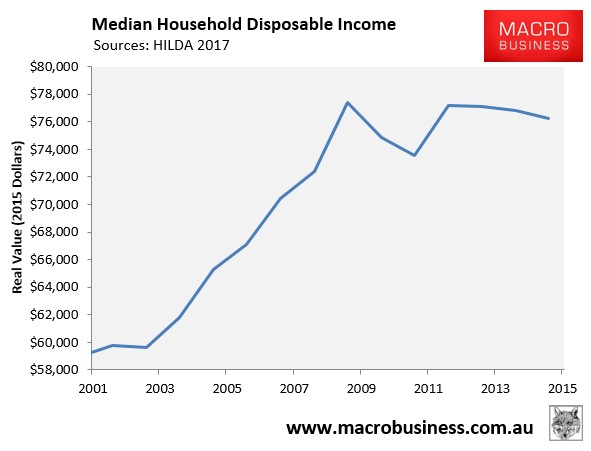
The HILDA survey also provides equivalised income, which measures material living standards by adjusting household disposable income for the household’s ‘needs’. This too declined from $46,762 in 2009 to $46,007 in 2015:
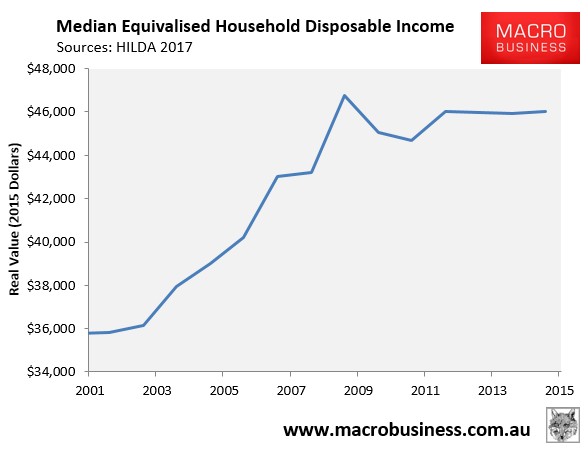
While somewhat shocking, these results should not come as a surprise. We already knew that real per capita wages & salaries have fallen by around 2% in the decade to March 2017:

With worker’s share of national income falling to half-century lows:
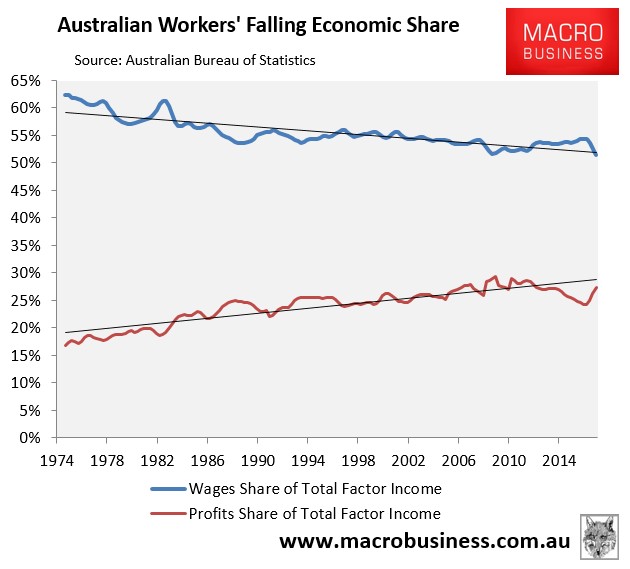
Meanwhile, separate data from HILDA shows that differences in average wealth by age have grown since 2002. For example, in 2002, median net wealth of those aged 65 and over was 2.8 times that of people aged 25 to 34. In 2014, this ratio had increased to 4.5:
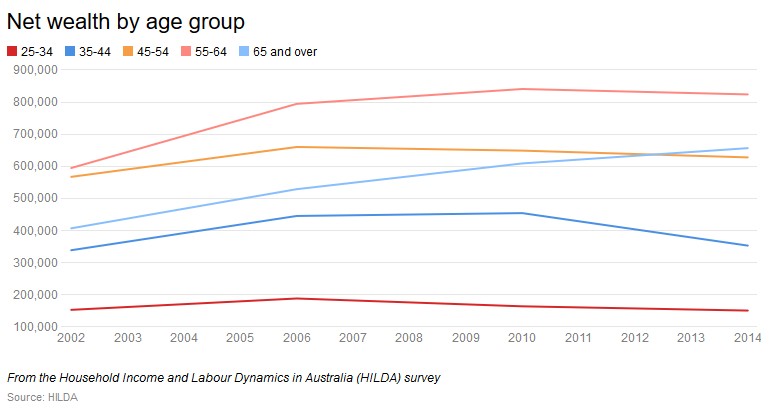
And this has been driven by the combination of collapsing home ownership among younger cohorts (while remaining steady or increasing for older cohorts) and surging property values:
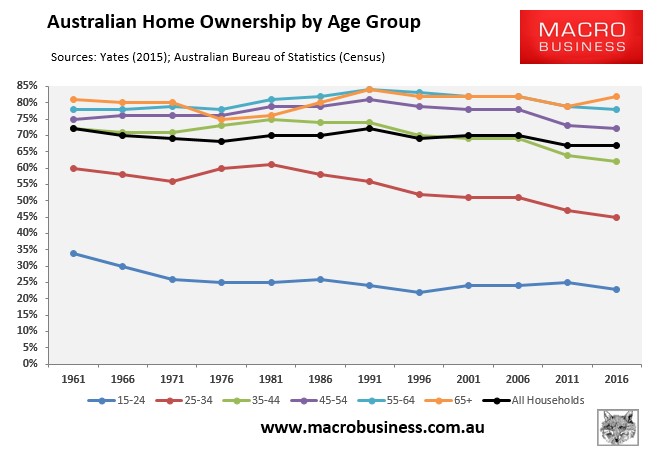
All of which paints a rather depressing picture and bolsters the case for Labor’s inequality agenda.

